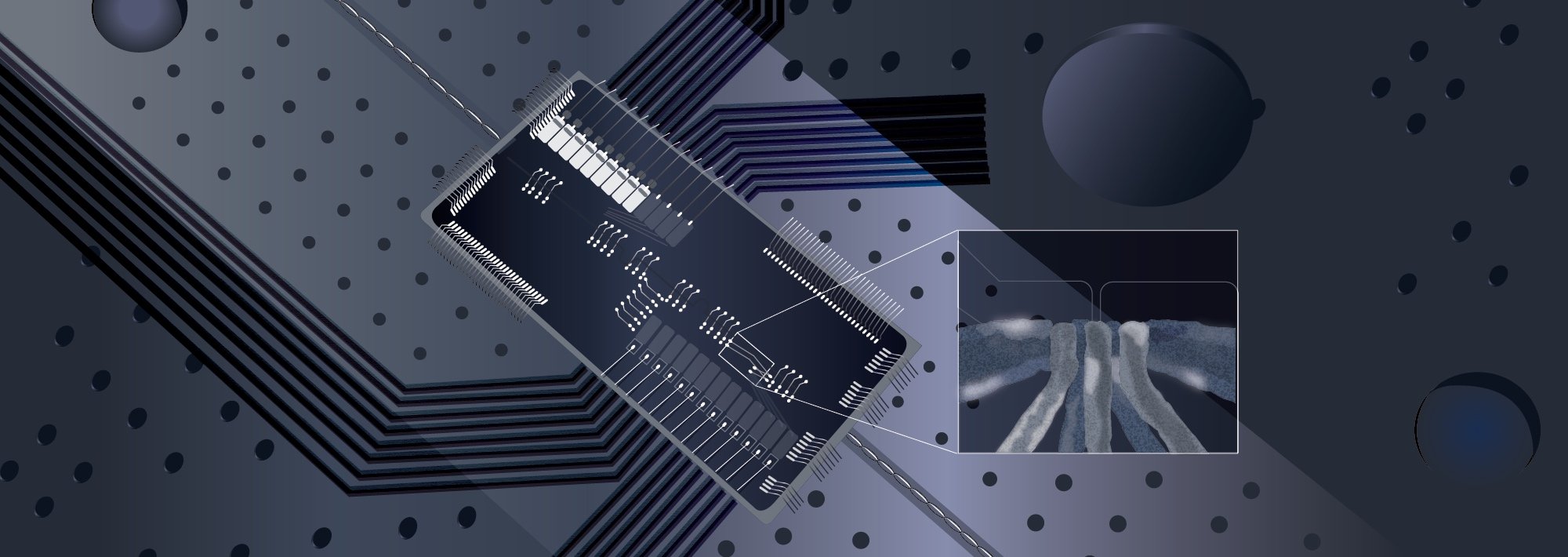
Nanofabrication
Nanotechnology is defined as the science and engineering of phenomena occurring at the scale of 1 to 100 nanometers (a billionth of a meter). Consequently, nanofabrication encompasses the techniques to create structures and devices at these size scales.

Nanofabrication includes two primary modalities: “bottom-up” and “top-down”
Bottom-up nanofabrication processes typically use chemical or atomic-scale forces to self-assemble structures into nanometer-sized objects. Bottom-up fabrication has the advantage of creating highly ordered structures with a high degree of regularity.
But it can be difficult to use as a general-purpose fabrication method for arbitrarily-shaped patterns. Examples of bottom-up nanofabrication techniques include block copolymer patterning, nanocrystal self-assembly, and DNA origami, to name a few.
Top-down fabrication generally uses lithographic techniques to deposit or etch larger-scale materials into desired structures. Top-down fabrication is highly flexible and adaptable, but has limits on the dimensions of the fabricated patterns and can often induce damage or irregularities into the nanoscale structures. Examples of top-down nanofabrication techniques include electron-beam lithography, ion implantation, and reactive-ion etching.
Nanofabrication is an important tool in realizing devices for quantum computing. However, it is used in vastly different ways depending upon the quantum platform.
For instance, in quantum-dot-based spin qubits, some researchers use electron beam lithography to pattern localized electrostatic potential “wells” roughly 100 nanometers wide that can confine and manipulate single electrons. Other researchers use the tip of an atomic force microscope or ion implantation to position individual atoms that produce single spin qubits.
On the other hand, superconducting “transmon” qubits based upon Josephson junctions are much larger, often tens of microns in size. However, these devices still rely upon precisely growing the nanometer-thick tunneling oxide that is a key factor in determining the qubit coherence times.

Next Steps
While present fabrication techniques are adequate for research purposes and small-scale commercial applications, the future of quantum technology will rely upon vastly improving the nanofabrication quantum infrastructure. Some of the nanofabrication challenges include controlling the purity of materials used in qubit fabrication, atomic-scale control of interfaces and surfaces, and improving the precise placement and alignment of features, sometimes down to the single-atom level.
In the Global Quantum Leap, we recognize that addressing these issues requires international collaboration. Therefore, we are working to develop a Quantum Technology Infrastructure Roadmap (QTIR) that seeks to evaluate with the future nanofabrication requirements related to quantum technologies. The QTIR has the intent of unifying the many disparate efforts in road mapping for quantum, and will be coordinated between various international academic, industrial, and governmental efforts.



